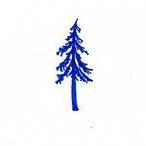
Whilst managing urban tree populationsin London during my day job, I come across a wide range of tree-associated fungi throughout the year. One of the most interesting tree/fungus associations I have had the pleasure of observing is that of oak (Quercus robur/petraea) and the late summer fruiting beefsteak fungus (Fistulina hepatica). It is known to associate with other tree species, most notably sweet chestnut (Castanea sativa), and a quick scan across the more recent of the 35 pages of its FRDBI records indicated that although it is predominantly found on Quercus, it is also recorded from Fagus, Fraxinus, Betula (unvouchered), Tilia and Aesculus.
From the tree manager’s perspective, our focus is on what potential effect a particular fungus has upon the tree and specifically which part(s) of the tree it inhabits. The mycelium of Fistulina hepatica causes a brown rot (affecting cellulose but leaving lignin behind). This leaves the affected parts of trees (root buttresses, trunk and main scaffold branches) brittle and prone to failure via cracking, although this can take many years to develop.
The presence of brown rot is quite difficult to read from a tree’s ‘body language’, unlike white rot, so the detection of brown heartwood decay- ers, (F. hepatica, Laetiporus sulphureus, Buglossoporus (Piptoporus) quercinus) is largely dependent on fruitbody observations. The presence of fruitbodies of the white rot decayers such as Pseudoinonotus dryadeus, Meripilus giganteus and the various Ganoderma spp. (Figs 1 & 2) are not necessarily as important in detect- ing their presence within the tree if one can read ‘the body language of trees’ (Mattheck 2015). Extra wood volumes are laid down incrementally

Fig.1. Probable mechanical adaptation shown at the base of an oak tree in Kent due to the presence of the white rot of Pseudoinonotus dryadeus. Photograph ©David Humphries

Fig.2. Probable mechanical adaptation in the base of an oak tree on Hampstead Heath which is colonised by Meripilus giganteus and an associated trunk bulge indicative of Ganoderma australe. Photograph © David Humphries
where there is either an internal mechanical fault such as a crack or where the wood is dimin- ishing due to the activity of enzyme secretion by fungal mycelium. This wood strengthening to alleviate mechanical stress is called thigmorpho- genesis. These visual ‘body language’ symptoms in the wood are key to helping assess and under- stand the structural stability of a tree particu- larly so when the associated fungal fruitbodies are not perennial.
Observations on Fistulina fruitbodies
The usual teleomorphic (sexual) fruitbody of F. hepatica is generally easily identifiable in the field by its orange-red upper surface, white/cream pore layer, its wet/spongy flesh and blood-like guttation droplets (Figs 3–6). Further confirmation is by its white spore deposit. The fruitbodies can vary in size dependent on the amount of resource the mycelium can access. The abundance of fruitbodies appears to vary from year to year possibly relating directly to moisture availability during the summer months.
Having first become aware of a similarly- coloured, but morphologically distinct, oak- associated structure during my own field observations and during discussions with the Dutch mycologist Gerrit J. Keizer during 2011- 2012, I and other English arborists started noting this seemingly abnormal fruiting stage more often whilst out inspecting trees. Over the last five years, I (and others) have compiled several images of such structures (Figs 7–9). They were possibly malformed or aborted F. hepatica fruit- bodies, but our hunch was that these were the seldom recorded asexually sporulating (anamor- phic) stage of this same fungus.
It wasn’t until early in the summer of 2016 whilst in casual conversation with Dr Martyn Ainsworth during a search for oak polypore Buglossoporus (Piptoporus) quercinus, and having just seen something vaguely similar to the above, that we discussed this apparently forgotten anamorphic stage. Martyn had not seen anything like it before so I sent a sample of a Hampstead Heath collection (Fig. 7) to him at the

Fig.3-6. Fruitbodies (telemorph) of Fistulian Heaptica on oak trees at Hampstead Heath. Photographs © David Humphries
Jodrell laboratory, RBG Kew, for formal identifi- cation. He found that asexual spores were abundantly present all over the outer surface thus agreeing with the structures historically described and named as Confistulina hepatica by Joost Stalpers (Stalpers & Vlug, 1983). This confirmed that our specimen from Hampstead Heath was indeed the anamorph of F. hepatica. The confusing historical practice of placing fungi into two or more different genera, depending on the sporulating stage observed, are now at an end thanks to the worldwide adoption of the “one fungus, one name” principle on 1 January 2013. Therefore, within taxonomic circles at least, there will be no rush to revive the monotypic genus Confistulina and our specimen has been filed at Kew under F. hepatica with an explana- tory note. It was surprising, given the number of recent British records known to me, including Hampstead Heath, Kenwood House, Whippendell Woods in Watford and at Aspal Close nature reserve in Suffolk, that the anamorph is not illus- trated in any of the current popular field guides. Martyn checked through the database notes accompanying 59 British and Irish collections at K dating back to 1850 and found only one case where an unusual structure had been noted. A collection made in September 1975 on oak in Epping Forest was noted by Derek Reid to be “a brain-like clump”. Sure enough this was covered in asexual spores and matched the modern sight- ings of the anamorph. For such a frequently observed and familiar fungus, this stage in its life cycle seems to have been very rarely seen or perhaps just dismissed as an immature or aborted specimen and passed over, at least until very recently. FM readers are urged to keep a lookout for it in future.

Fig.7. Anamorph of Fistuliana Hepatica K(M) 233325 on a trunk of living Quercus robur at Hampstead heath. Photograph © david Humphries

Fig.8-9. Anamorphs of Fistulina hepatica on the underside of an exposed root crown of a fallen Quercus robur at Hampstead heath. Photograph © David Humphries
References
Mattheck, C. (2015). The Body Language of Trees. Research Centre Karlsruhe.
Stalpers, J. A., and Vlug, I. (1983). Confistulina, the anamorph of Fistulina hepatica. Can. J. Bot. 61: 1660–1666.
-
 5
5
Report Article




.thumb.jpg.4a8e2360f3200bf7b0c542de10609966.jpg)









Recommended Comments
Create an account or sign in to comment
You need to be a member in order to leave a comment
Create an account
Sign up for a new account in our community. It's easy!
Register a new accountSign in
Already have an account? Sign in here.
Sign In Now